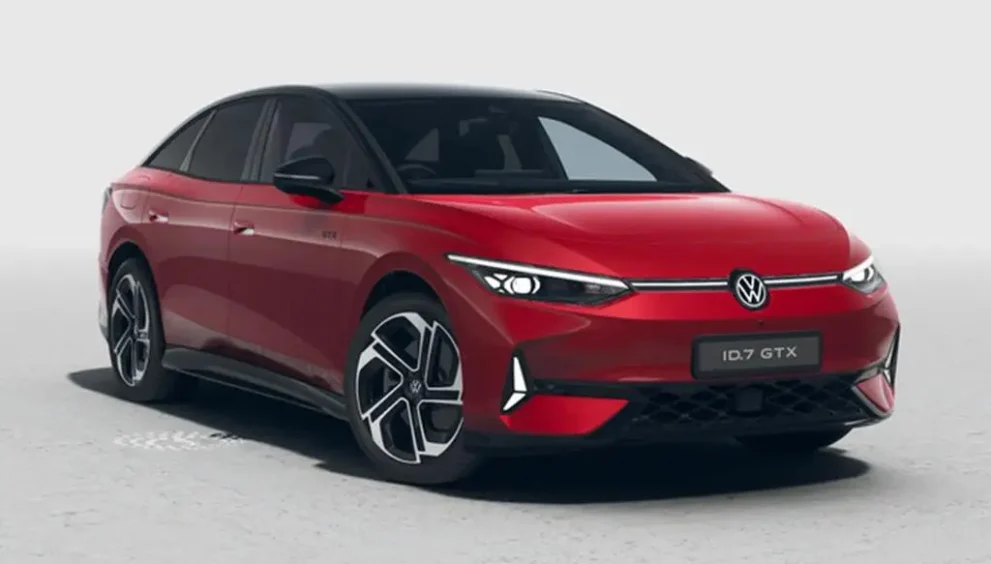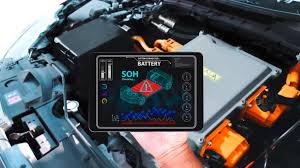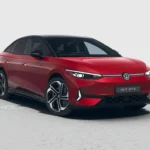Volkswagen ID.7 Review: Real-World Range vs Promised Performance – The Complete Analysis For You

Volkswagen ID.7 Review: Real-World Range vs Promised Performance – The Complete Analysis
The Volkswagen ID.7 has emerged as one of the most anticipated electric sedans in the premium EV market, promising impressive range figures that challenge established players like Tesla and Mercedes. But how do these laboratory-tested WLTP claims translate to real-world driving conditions? This comprehensive analysis examines the ID.7’s actual range performance across various driving scenarios, weather conditions, and usage patterns.

Understanding the ID.7’s Range Specifications
Volkswagen offers the ID.7 in multiple configurations, each with distinct range capabilities. The base ID.7 Pro features a 77 kWh net battery capacity delivering a WLTP-rated range of up to 382 miles (615 kilometers). The higher-tier Pro S variant boasts an 86 kWh net battery with an impressive WLTP range of up to 436 miles (709 kilometers), positioning it among the longest-range electric vehicles currently available.
These figures represent ideal laboratory conditions under the Worldwide Harmonized Light Vehicles Test Procedure (WLTP), which, while more realistic than previous testing standards, still doesn’t fully reflect the complexities of everyday driving.
Real-World Range Performance: What the Tests Reveal

Optimal Conditions Performance
Under favorable conditions, the ID.7 can achieve a real-world range of 323 miles, representing approximately 85% of its WLTP rating for the base Pro model. This performance aligns with industry expectations for premium electric vehicles, where achieving 80-90% of rated range in mixed driving conditions is considered excellent.
The efficiency can improve significantly in urban environments with lower speeds and frequent regenerative braking opportunities. Some drivers have reported efficiency figures reaching 4.5 miles per kWh on shorter journeys with 40mph limits, demonstrating the vehicle’s potential under ideal circumstances.
Highway Performance Challenges
Highway driving presents the greatest challenge for electric vehicle range, and the ID.7 is no exception. The vehicle’s aerodynamic profile, while impressive for a sedan, is compromised by its higher ground clearance and generous headroom, which makes it closer in height to crossover models than traditional sedans.
At sustained highway speeds, particularly above 70 mph, the ID.7’s range drops significantly. This reduction is typical for electric vehicles, as aerodynamic drag increases exponentially with speed, directly impacting efficiency and overall range.

Winter Weather Reality Check
Winter performance reveals the most significant gap between the promised and delivered range. During winter testing, the ID.7 managed only 190 miles, representing just 49.1% of the claimed WLTP range. This dramatic reduction occurred during cold weather testing with heating systems active and driving at 81 mph.
The substantial winter range reduction highlights several factors affecting electric vehicle performance in cold conditions:
Battery Chemistry Limitations: Lithium-ion batteries lose efficiency in cold temperatures, reducing both available capacity and charging performance.
Heating System Demands: Unlike internal combustion engines that use waste heat for cabin warming, electric vehicles must draw power directly from the battery for heating, significantly impacting range.
Tire Performance: Winter tires, while essential for safety, typically offer higher rolling resistance than summer compounds, further reducing efficiency.
Factors Influencing Real-World Range

Driving Style Impact
The ID.7’s range varies dramatically based on driving style and conditions. Conservative driving in Eco mode can maximize efficiency, while aggressive acceleration and high-speed cruising can reduce range by 30-40% compared to optimal conditions.
Climate Control Usage
Heating and air conditioning systems represent significant energy consumers in electric vehicles. The ID.7’s efficient heat pump system helps minimize this impact, but substantial range reductions remain inevitable during extreme weather conditions.
Battery Management Considerations
The ID.7’s sophisticated battery management system optimizes performance across various conditions, but drivers must understand that maintaining battery health requires leaving buffer zones at both charge extremes, effectively reducing usable capacity.
Charging Infrastructure and Practical Range
The ID.7 Pro supports 170 kW DC fast charging, while higher-trim models can accept up to 200 kW charging speeds. The 86-kWh battery in the GTX variant charges from 10 to 80 percent in just 26 minutes under optimal conditions.
This charging capability significantly impacts practical range considerations. For long-distance travel, the ability to add 200+ miles of range in 30 minutes transforms the driving experience, making the absolute maximum range less critical than charging speed and infrastructure availability.
Competitive Landscape Analysis
The ID.7’s range performance positions it competitively against established premium electric sedans. The ID.7 ranks among the longest-range electric cars available, alongside rivals like the Mercedes EQE and Tesla Model 3.
However, real-world efficiency varies significantly between manufacturers and models, making direct comparisons complex. The ID.7’s strength lies in its combination of interior space, comfort features, and reasonable efficiency, rather than class-leading range numbers.
Practical Ownership Implications
Daily Driving Scenarios
For typical daily use, the ID.7’s real-world range of 250-320 miles (depending on conditions) exceeds most drivers’ daily requirements by a substantial margin. The average daily driving distance of 40 miles means the ID.7 can easily handle a week of commuting on a single charge.
Long-Distance Travel
Highway touring requires more careful planning, particularly in winter conditions. The reduced range to approximately 200 miles in challenging conditions means charging stops every 2-3 hours of highway driving, which aligns with recommended rest intervals for driver safety.

Home Charging Considerations
The ID.7’s large battery capacity means longer charging times on standard home charging equipment. A typical 7 kW home charger requires 11-12 hours for a complete charge, making overnight charging essential for daily use.
Technology and Efficiency Innovations
Volkswagen has implemented several technologies to maximize the ID.7’s efficiency:
Aerodynamic Optimization: Despite its crossover-like height, the ID.7 achieves a competitive drag coefficient through careful design optimization.
Heat Pump System: The efficient heat pump reduces energy consumption for cabin heating compared to traditional resistance heating.
Regenerative Braking: Multiple regeneration levels allow drivers to optimize energy recovery based on driving conditions and personal preferences.
Future Range Improvements
Volkswagen continues developing battery technology and efficiency improvements for future ID.7 updates. Expected improvements include:
Battery Chemistry Advances: Next-generation lithium-ion chemistries promise improved energy density and cold-weather performance.
Software Optimization: Over-the-air updates can refine battery management algorithms and efficiency systems.
Charging Infrastructure: Expanding high-speed charging networks reduce range anxiety by improving charging convenience.

Conclusion: Realistic Expectations for ID.7 Range
The Volkswagen ID.7 delivers competitive real-world range performance that meets the needs of most drivers, despite falling short of its WLTP ratings under challenging conditions. Potential buyers should expect 250-320 miles of range in typical mixed driving, with significant reductions possible during winter weather or sustained high-speed driving.
The vehicle’s strength lies not in achieving maximum theoretical range, but in providing a well-balanced combination of space, comfort, technology, and efficiency. For buyers prioritizing practical electric mobility over maximum range bragging rights, the ID.7 represents a compelling choice in the premium electric sedan segment.
Understanding these real-world limitations allows prospective owners to make informed decisions about whether the ID.7’s capabilities align with their driving patterns and expectations. As charging infrastructure continues expanding and battery technology improves, the gap between promised and delivered range will likely narrow, making vehicles like the ID.7 even more practical for mainstream adoption.























































































































































































































































































































